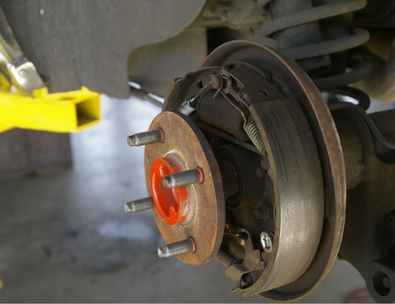
One of the most important function of a car is the braking mechanism. A faulty braking system can result in an incredibly dangerous situation if a driver needs to stop a car immediately. This is why every car owner should periodically check the brakes of his car, and make sure he understands the components and how they function in order to ensure the mechanism will work in the event of an emergency.
The master cylinder is usually two completely separate cylinders in one unit and each controls the braking mechanism on two wheels. This means if one side fails to work you will still be able to stop the car if you hit the brakes. If a brake problem should arise, a warning light should light up on the dashboards of most conventional cars. The most common problem that occurs with master cylinders is a leak of braking fluid. Drivers can check their brake fluid levels in the reservoir located on top of the master cylinder. The master cylinder is located on the engine compartment directly in front of the driver's seat.
Brake lines are what allow braking fluid to travel from the master cylinder to the wheels of a car. The front wheels of a car are usually connected by a series of rubber hoses, while the back wheels are connected by non-corrosive seamless steel tubing. The front wheels require rubber hoses instead of rigid, steel tubing as flexibility is needed between the braking mechanism and the front wheels.
One kind of vehicle brake is the disc brake. These are not only used in cars, but also in trains and aircraft. Disc brakes are designed to be able to adjust themselves and are self cleaning, which means they last longer. They usually consist of brake pads, disk rotors and calipers. Two brake pads go with each caliper, and come in contact with the disk rotor to cause friction to slow down a car. Brakes pads and rotors should be periodically checked to ensure they are not too worn down, otherwise they must be replaced.
Another kind of brake is the drum brake. These are less expensive than disk brakes as they lack a complete mechanism like disc brakes, and only require an additional parking brake to function. Drum brakes are made up of backing plates, brake shoes, brake drums, wheel cylinders and return springs. For drum brakes to work, brake fluid is forced into the wheel cylinder, which pushes the brake shoe against the inside of the drum to slow the car down. This means as the linings wear down, the brake shoes have to go a bit further before reaching the drum. The backing plate connects all of the other parts together.